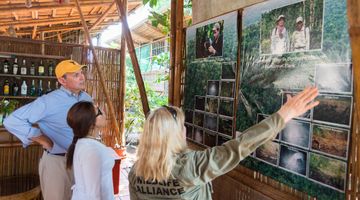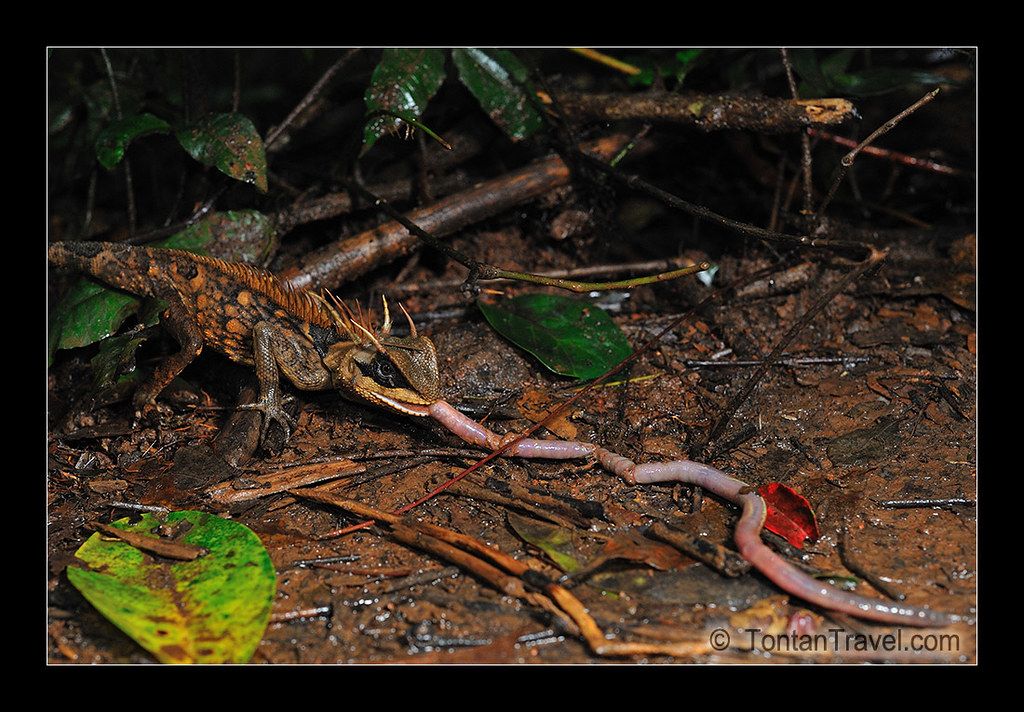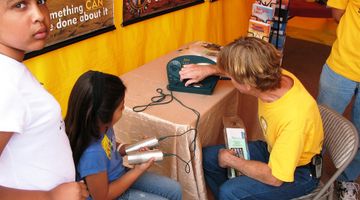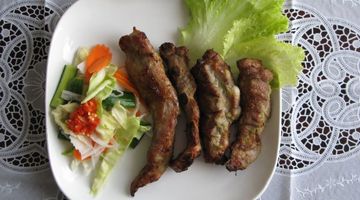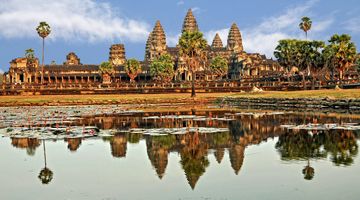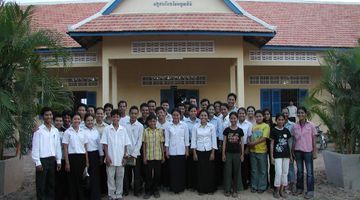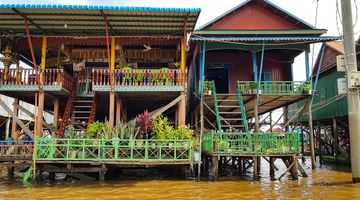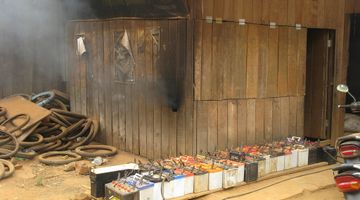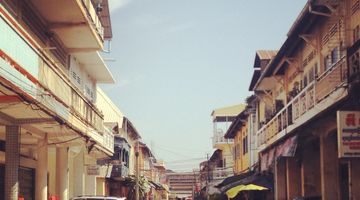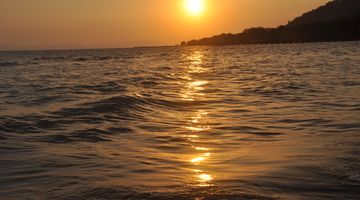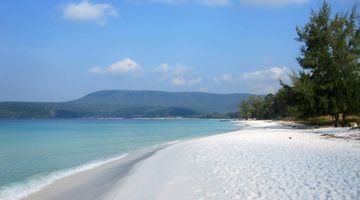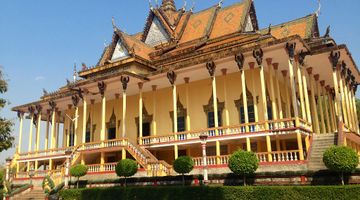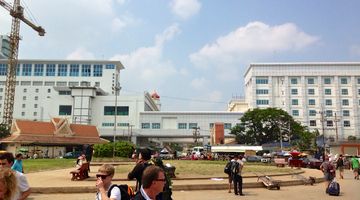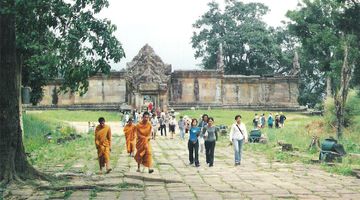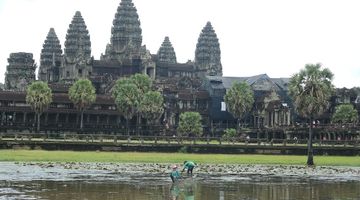Cardamom Mountains – Cambodia’s Hidden Nature Paradise
In a nutshell
The Cardamom Mountains stretch over an impressive four and a half million hectares, covering a significant portion of southwestern Cambodia. The mountain range rests at the edge of the Thai border, once providing an escape route across the border during the horrific period that the Khmer Rouge reigned.
Why go to the Cardamom Mountains
The mountain range is one of Southeast Asia’s last expanses of thriving lowland rainforest – a place where adjoining mountains are connected to the ocean through rivers that cascade into the sea. The mountains are widely considered as Southeast Asia’s greatest natural resource, one whose wildlife habitat is yet to be explored and documented.
The region is so undeveloped, unresearched and largely unprotected because of the presence of the Khmer Rouge in the early 1980’s. After the regime fell, guerrillas retreated into the mountains. The area was consequently avoided for over twenty years out of fear for the guerrillas and the mines that they had laid.
Today, around 25 000 thousand people are believed to live in the mountains, many of which are the ethnic minority – the Porr.
The mountains are known to contain almost all of the country’s known animal species. Not only that, it is home to some of the most endangered animals in the world – some of which are entirely extinct in other parts of the world. The incredible array of animal species is due to the extremely rich diversity in habitats that the mountains offer. However, the known animals are just the tip of the iceberg. The area is incredibly under-researched and is speculated to have hundreds, if not thousands of undocumented species.
If this is not reason enough to explore the countryside and satisfy your inner zoologist, then nothing will be. Just a handful of the potential sightings that lay in wait include those of the Asian elephant, Indochinese tiger, Siamese crocodiles, pleated gibbon, Malaysian sun bear, and clouded leopard. It is hard to believe, just writing all these names that all these creatures can exist in one small corner of the earth.
When to go to the Cardamom Mountains
The Cardamom Mountains receive the heaviest rainfall in the entire country. While the air is very clear after rains pour down, and while you may be able to grab some electric shots of the gloomy clouds rolling in over the tree tops, it doesn’t make for the best weather to go hiking in. Spirits are inevitably dampened and your shoes remain constantly sludgy. To get the most out of your experience, and to have the water of the waterfalls be a welcome contrast to your hot and sweaty shoulders, plan your trip between the months of October and April.
How to get to and from Cardamom Mountains
Getting to the mountains from either Siem Reap or Phnom Penh is shockingly easy. While your trip along the road may not be the easiest (when is a cross-country bus not a little uncomfortable?), the complications are few. You will also not have to spend time waiting for connections. You will need to make but one ascent up the stairs of the bus you take and sit tight until you arrive. Easy.
That being said, things stand to get even easier should you decide to book your trip through a tour agency. While you will still need to take the public bus to the mountains, any insecurity you may feel is vanished with the presence of the guide beside you. However, be aware that only certain companies offer to join you on your trip from your city of origin, and that many tours only begin once you have reached the mountains.
To get in from Phnom Penh, take a direct bus from PPSDN. The bus will take around 8 hours, will cost around KHR 61, 300 and is available to you three times a day.
Getting in from Batttambang is a little frustrating. You’ll have to take a bus back to Siem Reap, and then get the next one to the mountains from there. This adds a good three hours to your journey as well as around KHR 40, 000. The trip in total from Battambang will then take around 11 hours – the longest of all the journeys from surrounding cities and towns.
Travel time from Bangkok will be around 8 hours and is the most complex of all the journeys. However, its stopovers and changes are very manageable when you only have six hours to endure. A (hopefully) quick stop at the border, KHR 65,000 later, and you’ll find yourself in the expansive yet congested rainforest of Cambodia.
Things to do and to see in the Cardamoms
Thoughts around things to do in the mountains don’t stretch too far from what you would expect. However, and somewhat paradoxically, there are things that will surprise you, grab you, and leave you feeling overwhelmed the beauty of it all.
The jungle is, of course, a jungle. Trekking is, as such, the predominant activity round these parts. There are various trails that head passed different highlights of the jungle, each with their own merit and place in the bouquet of options before you. Mountain biking through the trails is an alternative for the more physically inclined and adventurous. The jungle is packed with cascading waterfalls and calming rock pools, bat caves, wild animals, and a host of bird species.
The jungle is, in its untouched beauty, appealing simply as a chance to step into alternative realms of reality. It is a chance to explore the world before technology, before the thoughtless footprint of corporates and conglomerates. It is a wonderful opportunity to rub shoulders and share simple interactions with locals of the mountains. A chance to re-evaluate your ideals, practices and ideas of success.
How to choose the best tour to the Cardamoms?
With regard to tours, the options before you are numerous. Flexibility in terms of duration, cost and itinerary all allow you to find something that is perfectly suited to your needs and preferences. Spend a little time online looking at your options, make the decision, and then book in advance. This will surely save you money and hassle, as opposed to booking something in Phnom Penh or Battambang.
There is this trek through the Cambodian countryside, passed rustic villages and banana plantations, curious elephants and several perfect swimming spots. It is something conjured up in a dream. This is the trek along the Veal Ta Prak trail. This trail is not excessively demanding and really does cover the highlights of the forest, making it the ideal tour for all kinds of travellers wanting to get the most of their time in the jungle. The trail takes you deep into the forest and past things that will soothe your soul, calm your racing mind and thrust you into the depths of the moment. Highlights include the Veal Ta Prak pond, the O’Key mountain community, and the O’Malu waterfall. Although, maybe the best of it all is falling asleep to the sounds of tumbling water at the O’Malu campsite. The tour will cost around KHR 260, 000.
The next tour is for the more adventurous travellers – those of us who watched ‘Into the Wild’ and thought, “Hey, I could do that”. The tour will have you mountain biking through the thick of the forest and across freshwater streams, spending nights at rustic campsites beside waterfalls and rivers, and then keeping your eyes peeled on a sunrise birdwatching cruise. Just as lying on the beach is made better by frequent dips in the refreshing waves before you, this great combination of relaxation and exercise will see you valuing each alternative more than you would on their own. Spend the days traversing the winding paths through the jungle. Spend your breaks and evenings swimming in cool waters and absorbing the beauty of the many waterfalls, spend each night under the especially bright stars, swaying gently in your hammock as the sounds of people’s murmurs slowly lull you into a to sleep. This tour costs a little more, but will depend on what company you book it through. You should pay something around the KHR 300, 000 mark.
All tours into the jungle start and end at Chi Phat. It is the gateway to the jungle. Should you find yourself having an evening to yourself either upon your arrival or departure, you would be wise to spend that time floating down the Prek Phiphot river on a tiny wooden boat. Keep your binoculars close as you scan the banks and skies for wildlife contrasted against the colours of the setting sun. If you want to take things one step further, you can organise to have dinner on your little boat – a pretty great way to start or end your trip in the Cardamom Mountains.
Travel tips
Unlike other places in the country, the area is relatively free of tourist scams and potential pitfalls. This is most likely due to the relative isolation of the area and the very few people that live there. Of course, it is always better to be safe than sorry, so keep your wits about you on the road. Be sure to keep valuable belongings in a secure location, keep your bags within your line of sight, and be wary of the people you come across that offer to help you in a seemingly altruistic manner. Stick to these guidelines, and you’ll be just fine!
